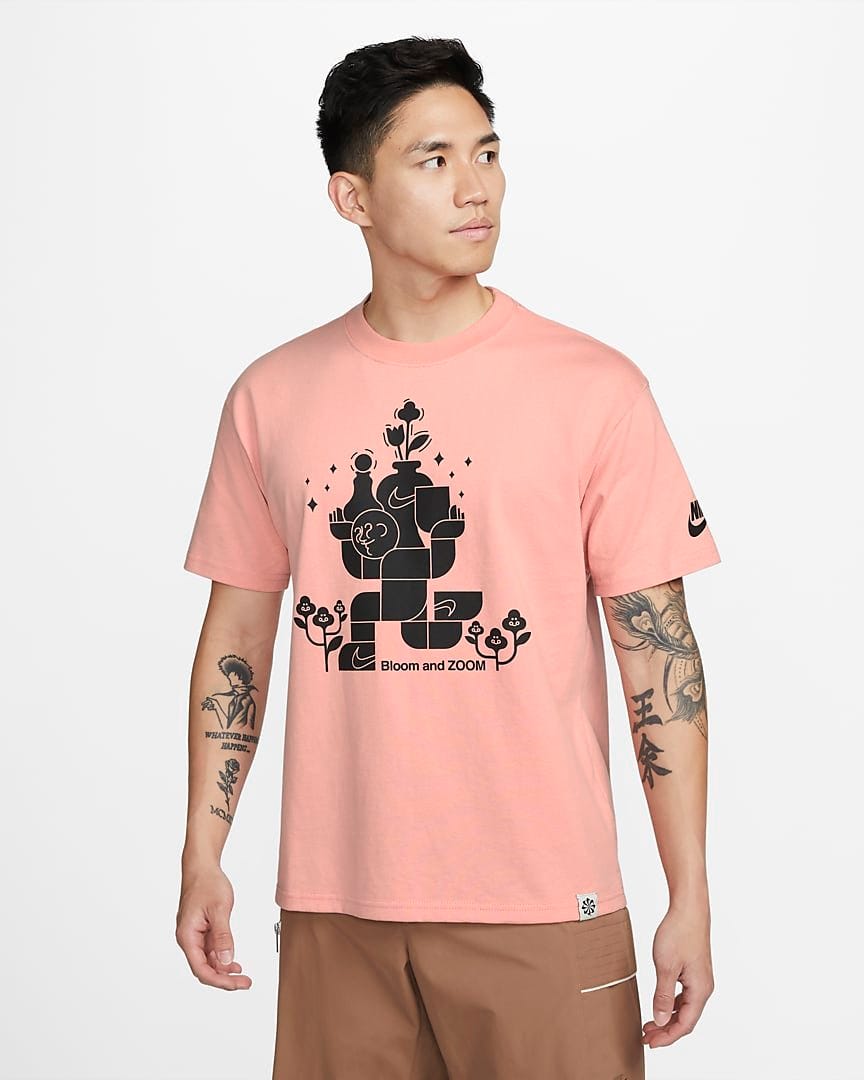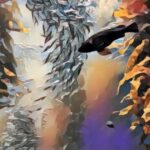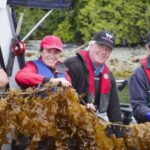In today’s report – Markets: 👒 Tackling the fashion industry with algae tech
Chart: Algae aquaculture in 2020 📉
Epic: Making foam from algae and recycled plastic ♵
Reports: Give it up for the FAO 🐟
Around the web: Aquaman meets Seaweedman 🧜♂️
“We are all citizens of Planet Ocean, and it falls on our watch to do the necessary work to secure the healthy, thriving ocean on which humanity’s future depends.” — Peter Thomson, UN Special Envoy for the Ocean
Dear algae technologists – hello and welcome to this week’s Paxtier Report!
To start this email, let me draw your attention to Nike’s new sustainable t-shirts, which showcase Scott Fulbright’s “algae ink”.
Scott’s company, Living Ink, makes eco-friendly pigments from algae. And several brands – including Marmot and Vollebak – have implemented the extract in their products.
So, what do you think – can algae ink disrupt the billion-dollar pigment industry?
Find out more HERE.
Markets and Investing
👒 Tackling the fashion industry with algae tech
This week, AlgiKnit raised $13 million from Collaborative Fund, H&M CO:LAB, Third Nature Ventures, and Starlight Ventures.
And it got folks in the biomaterials space talking.
But who are AlgiKnit and what do they do?
The company first landed on the scene in 2017, when Tessa Callaghan and Aleksandra Gosiewski set out to make fashion more sustainable. And that’s when they turned to kelp.
Thanks to their “non-toxic, wet-spinning process”, the team produces various recyclable yarns and fibres from seaweed – which they hope will replace conventional materials in the clothing industry.
And how much positive impact could this have?
Making clothes, footwear, and textiles from conventional fibres creates huge amounts of pollution. In fact, according to the EU, the fashion industry causes around 10% of global GHG emissions, 35% of all microplastics in the oceans, and one fifth of the world’s clean water pollution.
AlgiKnit’s products could eliminate a good chunk of these problems, and here’s what CEO, Tessa Callaghan had to say about that:
This is a huge next step in bringing this technology to scale, and creating positive, tangible change for the planet. We are so excited to partner with new and existing investors who share our vision for transforming the fashion ecosystem.
With the opening of our new facility in the Research Triangle area of North Carolina, we are focused on expanding our production capabilities, partnerships, and team to address global demand more quickly.
✂️Algae Market Snippets
Some other big moves this week:
- TransAlgae is looking to raise $12 million for its algae-based oral treatment against the shrimp disease WSSV. (Read more HERE.)
- Seamore has been acquired by De Smaakspecialist. This pioneering seaweed snack company has been paving the macroalgae way in Europe for the last 7 years – but where will it go from here? (Read more HERE).
- This week, Daniela Fernandez’s Sustainable Ocean Alliance team had something to cheer about as they announced $15 million in new funding. This team hopes to become the de facto professional network for ocean, and climate-focused entrepreneurship. And much of their fundraising needs stemmed around their algae ambition: “A lot of these entrepreneurs are coming to us and saying, for example, I need a seaweed expert to join our advisory board. And we have to say, wait until our program begins again next year. But we want to provide that expertise any time of the year.”
- Fermentalg announced that it has reached the final technical milestone in the scale-up of Galdieria Blue Extract: “Innovation in the field of precision fermentation is an important avenue to create the colours that will shape the future of multisensorial food experiences. We are very excited at the prospect of adding this new sought-after reference to our natural colour palette. It offers an unparalleled solution that fills the previously unmet need for a natural, sustainable blue, especially in the flagship beverage sector. ” (Read more HERE).
- The executives behind leading food strategy consultancy, Changing Tastes, announced today the launch of Sea & Flour and its breakthrough line of baked goods including bread, buns and rolls. The products were debuted at the UN Ocean Conference this week in Lisbon, Portugal. Sea & Flour baked goods incorporate a blend of processed seaweeds. (Read more HERE).
- SARCO plans to build the world’s largest algae farm. This week, the company signed an alternative energy development agreement with Christoph Global, and intends to use the algae to produce biodiesel. Oh, and the investment’s first phase is valued to reach $267 million… (Read more HERE).
- UNCW Researcher to Receive $1 Million to Explore an Alternative Method to Produce Cement Using Microalgae. The project, “A Photosynthetic Route to Carbon-Negative Portland Limestone Cement Production,” will investigate an alternative method to generate cement that stores carbon dioxide (CO2) by using calcifying microalgae that capture CO2 in the form of limestone plates that cover their cells.
- Unilever is partnering with San Diego-based biotechnology specialists Geno. The plan involves jointly investing $120 million (€114 million) into a new venture to commercialise plant-based alternatives to palm oil and fossil fuels. (Read more HERE).
- VegTech and Top Investors Celebrate NYSE Listing of EATV – First Plant-Based Innovation ETF. “With the EATV ETF, we are proud to create a completely new impact asset class: Plant-based Innovation & Alternative Proteins. The ETF has over 40 companies up and down the supply chain that are innovating with plants and plant-derived ingredients to create animal-free products for sustainable consumption to address climate change and food security,” said CEO of VegTech™ Invest, Elysabeth Alfano. (Read more HERE).
- Alt-seafood startup Current Foods, formerly known as Kuleana, has raised $18M in seed funding to accelerate the production and availability of its premium plant-based salmon and tuna, reports Forbes. Using ingredients such as algae, potatoes, peas and bamboo, Current says it uses processes similar to companies like Beyond Meat to recreate the textures of seafood from plants. (Read more HERE).
- New Report Says Alt Protein is On Track to Shape Multi-Trillion Dollar Food Market: “Transforming the global food sector into a more sustainable industry is one of the most urgent tasks of our time that will bring vast benefits to consumers, society and our planet,” says Olaf Koch, co-author of the report and CEO of ZINTINUS. “Fortunately, establishing a more sustainable and healthier system is absolutely possible with the right platforms to foster food tech innovation and deliver sustainable products to consumers.” Read more HERE.
- Ignae is launching in the UK: With a size of 400 nanometers, their liposome products can access deep layers of the skin, allowing the algae and plant extracts, sourced from the Azores Islands, to be absorbed more easily. (Read more HERE).
In depth with Peter Green
🐟 Give it up for the FAO
This week’s UN Ocean Conference saw the release of the Food and Agriculture Organization’s (FAO) State of World Fisheries and Aquaculture report.
And this year, it’s all about the ‘Blue Transformation’ strategy, which explores how we can produce, manage, trade, and consume aquatic foods sustainably under the UN Sustainable Development Goals.
Aquaculture in 2020
According to the report, growth of all aquaculture, particularly in Asia, lifted total production in the sector to an all-time high of 214 million tonnes in 2020, consisting of 178 million tonnes of aquatic produce and 36 million tonnes of algae for consumption.
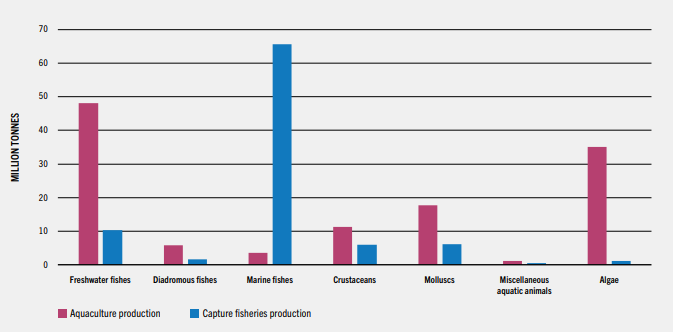
And while that may seem impressive when compared to algae production 20 years ago (see figure 2), total algae production only increased by 2 percent in the period from 2019 to 2020.
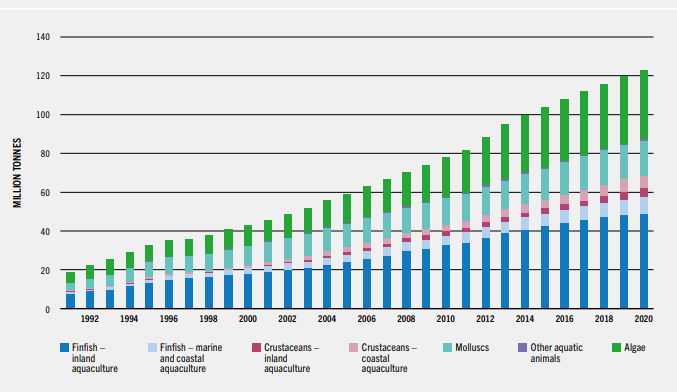
Essentially, there was only a 0.5 million tonne increase in global algae cultivation from 2019 to 2020, driven mainly by China and Japan.
And here’s how the major players in the industry stacked up in 2020:
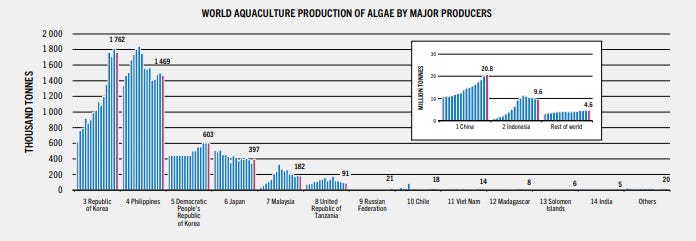
Overall
With total demand for food expected to ramp up, the report questions whether we can provide global food security in the future.
Clearly, plenty more work and research needs to be done to meet that demand, but algae remains one of the most attractive and sustainable food sources available to us moving forward. Here’s what Manuel Barange, Director of FAO’s Fisheries and Aquaculture team, had to say about the situation:
We need to make sure that we start looking at the species that are arriving to markets that might be different from the historical ones. Ultimately, if the adaptation to climate change is done properly, aquatic food consumption per capita can continue to grow, helping release pressure on land-based food production systems.
📝Research Rundown: Making foam from algae and recycled plastic
THE BIG IDEA
Foams are commonly used as sound absorbers and thermal insulators for many industrial and construction applications.
But these foams are conventionally produced from primary raw materials, such as rocks and fossil fuels. And as the world becomes more sustainable, renewable insulators represent a multi-billion-dollar opportunity.
So, this week I was excited to see Caniato et al.’s paper feature in Nature, which presents a novel sustainable foam insulator made from an alginate matrix and plastic waste powder.
How does it work?
Alginate is a linear anionic polysaccharide extracted from brown algae. It’s widely known for its suitability as a bio-scaffold and can produce porous structures with very good acoustic properties.
As a result, by combining alginate with a microplastic powder, we can develop renewable, open-cell foam for various industries.
And that’s exactly what Caniato et al. did.
Ultimately…
The resulting foams were great at sound absorption and had tuneable characteristics. For example, by varying the type of microplastic, or changing the alginate concentration, the team could tailor the product for different sectors. And this opens the door for its use in civil, industrial and naval applications in the future.
🔥 What else was hot in algae-tech this week?
- (Paper) Microbiomes of bloom-forming Phaeocystis algae are stable and consistently recruited, with both symbiotic and opportunistic modes: this study reveals symbiotic and opportunistic interactions between Phaeocystis colonies and microbiome bacteria that could influence large-scale phytoplankton bloom dynamics and biogeochemical cycles.(Nature)
- BioMar Group became the first global aquafeed supplier to commit to adopting the 1.5°C pathway toward net-zero. “As aquaculture feed represents around 80% of the carbon footprint of farming, it is essential to our farmers that BioMar makes a strong commitment and accelerates the drive to net-zero. In this year’s Sustainability Report, we lay out in detail our reduction pathway while disclosing where we are today. We thoroughly explain the robust scientific methodologies and reporting systems that we are using,” stated Vidar Gundersen, Global Sustainability Director, BioMar.(Read more HERE)
- Acadian Plant Health™ (APH) announced the first results of its California almond water use study, which offers promising news for tree nut growers and the almond industry in the drought-affected growing region. In 2021, the University of California study found that applications of Acadian Organic were beneficial for reducing plant stress under limited water conditions, and that when used properly, seaweed-based biostimulants have the capability to help combat drought induced changes in plants. Both findings represent a significant boost for growers looking for sustainable agriculture solutions in the face of drought challenges. (Read more HERE)
- How to target flexitarian consumers with plant-based products. A recent pan-European Union (EU) survey led by ProVeg International found that almost 40% of EU consumers now identify as either flexitarian, vegetarian, pescatarian, or vegan, while in Germany, over 50% of consumers identify as flexitarian. In this article ProVeg shares top tips for brands and retailers looking to reach this market.
- (Paper) A hybrid inorganic–biological artificial photosynthesis system for energy-efficient food productions: Here a two-step CO2 electrolyser system was developed to produce a highly concentrated acetate stream with a 57% carbon selectivity (CO2 to acetate), allowing its direct use for the heterotrophic cultivation of yeast, mushroom-producing fungus and a photosynthetic green alga, in the dark without inputs from biological photosynthesis. An evaluation of nine crop plants found that carbon from exogenously supplied acetate incorporates into biomass through major metabolic pathways. Coupling this approach to existing photovoltaic systems could increase solar-to-food energy conversion efficiency by about fourfold over biological photosynthesis, reducing the solar footprint required. This technology allows for a reimagination of how food can be produced in controlled environments. (Read more HERE)
- Clothes for the “apocalypse”: How to design for a climate crisis. From sub-zero temperatures to forest fires and droughts, performance wear brands are designing for the climate of tomorrow. Finding sustainable materials that function in extreme weather is a challenge. (Read more HERE)
- As the UN Ocean Conference kicks off in Lisbon, Ocean Wise releases a new report highlighting the economic, social and environmental potential of kelp forests in British Columbia. The report, titled Seaforestation: Benefits to the climate, the ecosystems, and the people of British Columbia, argues that Canada should pursue seaforestation at scale – the restoration, planting, management, and care of underwater kelp forests – as a no-regrets climate solution. (Read more HERE).
- Seaweed farming, macroalgae protection and asparagopsis feed are added to Project Drawdown. The update lays the groundwork for Project Drawdown’s next major effort: developing and helping to activate strategies for implementing climate solutions that also benefit human well-being, biodiversity, and more. Businesses, funders, organizations, and individuals are encouraged to use the updated solutions set as a resource for making wise choices as to how to direct their climate solutions efforts. (Read more HERE).
- Say hello to The Ocean Impact Navigator, a new impact measurement tool for the Ocean Impact Innovation Ecosystem. The Ocean Impact Navigator consists of 30 prioritized prioritised KPIs, grouped in six main impact areas to capture the impacts that innovators are driving across ocean health, climate change, and human wellbeing and equity.(Read more HERE).
- Ireland launches new online aquaculture management system: The Irish Minister for Agriculture Charlie McConalogue has unveiled phase 1 of AQUAMIS – a public online aquaculture information management system that promises to be “state of the art”. (Read more HERE).
- (Paper) Archiving the genomic and genetic resources of glaciers. This catalogue provides a wealth of resources for archiving glacier microbial diversity and bioprospecting for bioactive compounds, as well as a platform for global comparison of glacier microbiomes. (Read more HERE).
- Woods Hole Oceanographic Institution (WHOI), the University of Connecticut, and Bigelow Laboratory for Ocean Sciences have executed a license agreement for a kelp germplasm, or collection of microscopic cells called gametophytes, containing more than 1,200 samples all developed and isolated by WHOI and UConn-led teams. Bigelow Laboratory’s National Center for Marine Algae and Microbiota plans to maintain, market, and distribute the germplasm collection for broad use. (Read more HERE)
🐦Tweet of the week
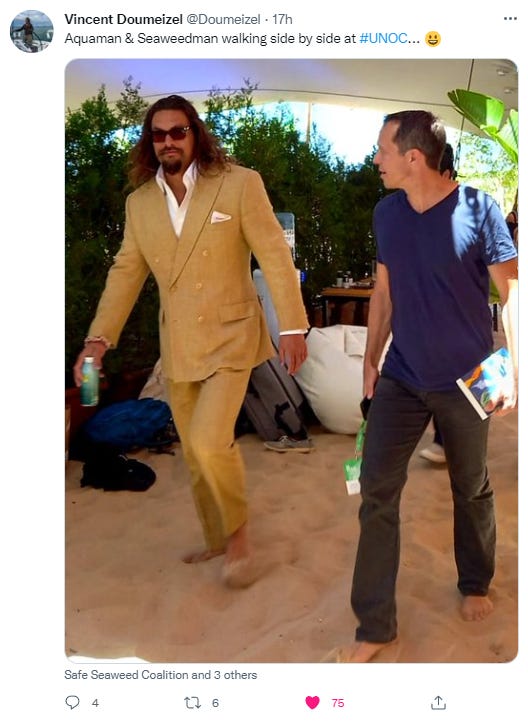
That’s all folks!
Thanks again for joining us this week. Hope you have a great day and stay tuned for more algae tech updates soon!
Peter


